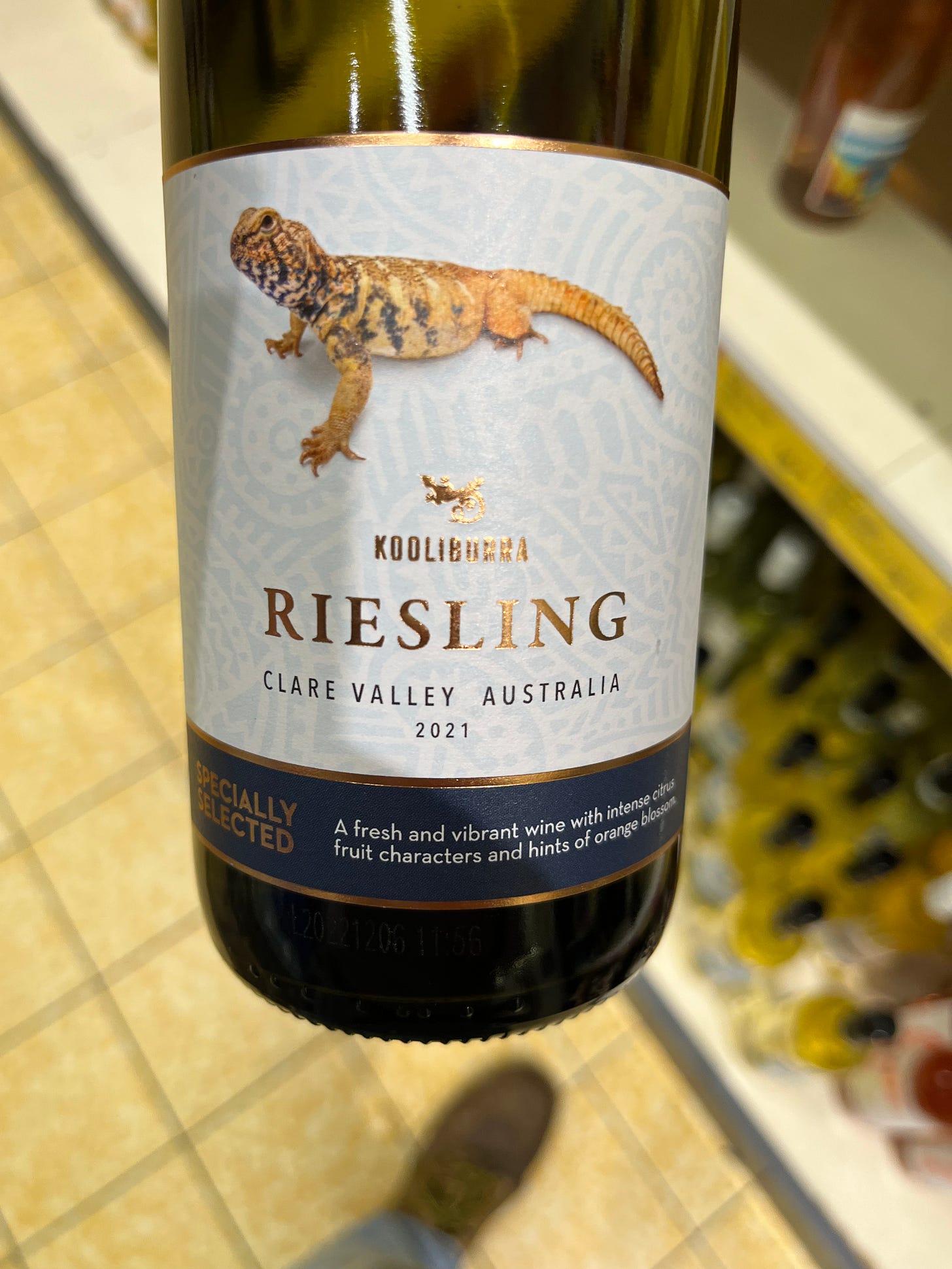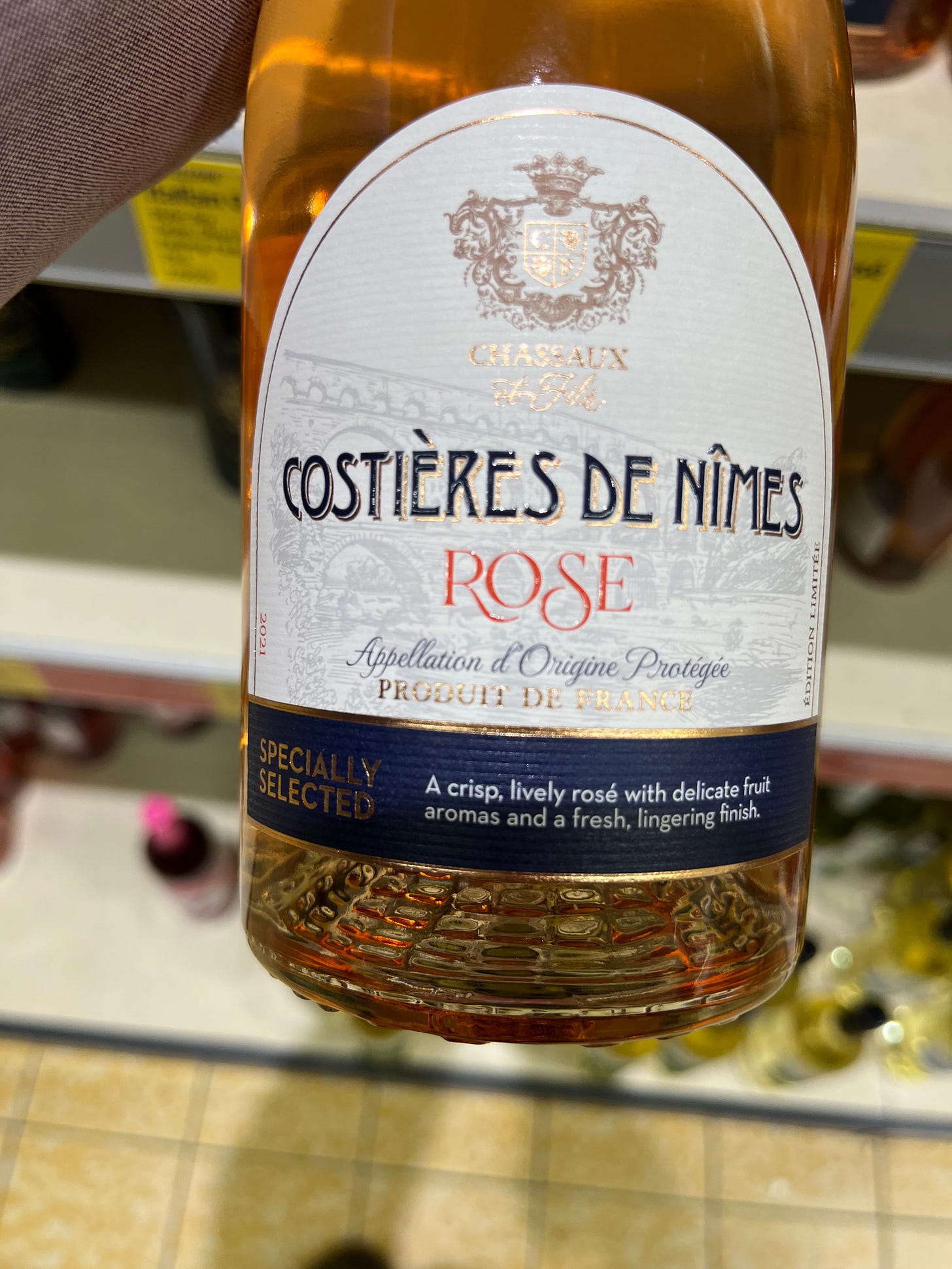Last week’s #AldiWineClinic was a very busy one and the pace was frenetic at times. I’ve tried to make sure that I have replied to everyone but I fear some may have slipped through the net. Do feel free to ask again!
Old friend Billy Linehan suggested that I put together all of the wine recommendations in one place, so here you go…
When I was trailing the event I used a picture of the Kooliburra Clare Valley Riesling (€8.99) and this prompted a question about this frequently misunderstood grape. Sure, it can be sweet but these days it’s almost always dry, or just a touch off-dry. This one has <2g of residual sugar per litre. That’s bone dry. And it’s lovely: lime zest and the faintest whiff of 4 star unleaded, i.e. absolutely classic
!
The other picture that attracted attention was the deliciously fruity Costières de Nîmes Rosé (€8.99), again pretty well as dry as a bone – and there were questions about how can you tell if a pink wine is sweet or dry. The short answer is you can’t, but avoid Rosé d’Anjou if you don’t want sugar. All of the rosés in Aldi at present are on the dry side, most being very dry. The other pink that I mentioned was the Côtes de Beziers Rosé (€9.99), crisp, refined, elegant. I have poured it into several guests who have remarked that they didn’t know that rosés could be like that! Truly, they are misunderstood wines
.
There was a good question about Merlot and whenever that grape crops up I’m reminded of the line in the movie Sideways (which refers to Californian’s syrupy Merlots in 30 years ago): “I will not order a fu**ing Merlot!” Well the two I recommended are well worth ordering: the Cambalala South African Merlot (€8.99) which is remarkably French in style but has a tell-tale touch of ripe Cape fruit, and the brilliant (and brilliantly-priced) Château Billeron-Bouquey Saint-Émillion Grand Cru 2019 (€14.99) which is exclusive to Aldi Ireland (i.e. you won’t find it in Aldi UK). Obviously it’s not 100% Merlot but Merlot is very much the dominant grape in this lovely young claret that will improve for 5 or 6 years, I’d say).
I was able to recommend Aldi’s two Greek wines as food pairings (we’re talking shellfish and general seafood): the Athlon Assyrtiko (€9.99) with its citrus zest freshness and oyster shell minerality and the lovely Filos Estate Chardonnay (€12.99), with its racy acidity and subtle touch of toasty oak. Another seafood suggestion was the prettily presented Specially Selected Greco di Tufo (€11.99), not a common grape, this example having ripe pear, a touch apricot and toasted almonds.
.
There was much rejoicing at the return of the Grande Alberone Primitivo (€12.99) with its steroidal fruit and spicy, stewed plum and spicy cherry character. Much of its seductive quality is down to relatively high residual sugar (i.e. fruit sugar that survives fermentation) but it’s a lot less than you would get in a HobNob, for example!
One participant was wondering what to serve with goat, not something that’s currently on the Aldi shelves but never say never. I suggested doing it with Middle Eastern spices and the Specially Selected Vin Rouge du Liban (€9.00) from the Lebanon. Asked for my top Italian pick at the moment – and the implication was in reds – I plumped for the amazingly well-priced Specially Selected Valpolicella Ripasso (€10.99) with its delicious intensity and faint hint of burnt currants
.
One of the later questions was about what I had chilling in the door of the fridge. The answer was simple the luscious and distinctly different Specially Selected Roussanne (€9.99) which always reminds me of a Doyenné du Comice pear with the kind of juice that dribbles down your chin.
Anyway, those were the highlights. If you would like to let me know how to improve the next #AldiWineClinic, just shout!







